Research Symposium
22nd annual Undergraduate Research Symposium
Daniel Siegel Poster Session 4: 12:30-1:15/Poster #25

BIO
Daniel is a first year English major at FSU. He is from Bethesda, MD. His research interests span from English literature to meta-research.
Peer Review in Social Work Journals
Authors: Daniel Siegel, Daniel DunleavyStudent Major: English
Mentor: Daniel Dunleavy
Mentor's Department: FSU Center for Translational Behavioral Science Mentor's College: College of Medicine Co-Presenters:
Abstract
Our project researches the peer review process of social work journal. We hope to assess the
effectiveness of the peer review process in these journals with the eventual goal of providing input
necessary to improve said process. There have been limited prior studies into this issue, but none have
been executed currently. Additionally, we plan to take a more focused view of the specific areas for
improvement necessary. Our study takes the form of a survey of those who have published work in the
top peer review journals. We plan to frame our study of peer review with respect to reviewer comments
on submitted manuscripts, paying special attention to respectfulness of comments, helpfulness of
comments, and disagreement between reviewers. We compiled a list of peer reviewers from top social
work colleges and sent our survey with some randomized incentives in the form of gift cards. We then analyzed and assessed the results for the primary problem areas in order to make suggestions for
improvements.
Keywords: Social Work Peer Review
22nd annual Undergraduate Research Symposium
Brooke Bascom Poster Session 7: 3:30 - 4:15/Poster #50

BIO
I am a 2nd year Behavioral Neuroscience student from Point Pleasant, New Jersey. My research intersts include how various factors of everyday life effect mental health and brain functioning. I am hoping to pursue a master's or doctoral degree after my undergraduate studies and enter the field of Neurophysiology.
Social Media Use and Happiness During COVID-19
Authors: Brooke Bascom , Stacey RutledgeStudent Major: Behavioral Neuroscience
Mentor: Stacey Rutledge
Mentor's Department: Department of Educational Leadership and Policy Studies Mentor's College: College of Education Co-Presenters: Karen Bogomolni, Emily Morris, Timothy Robinson
Abstract
Through the COVID-19 pandemic, students and teens have been challenged with learning remotely and relying ever more on technology to interact with each other. Our study investigates teen social media use and ratings of happiness. Focusing on the positive and negative attributes the participants feel utilizing distance learning and online friendships, we expand this investigation to include the changes in the personal habits and mental health of the participants. There were 43 participants from ages 12-18. Participants were interviewed twice for 1 hour with a researcher and kept week-long video diaries where they recounted their day and their use of social media. This was done for the summer of 2020 and 2021. Using the interviews and the personal video diaries, we utilize Qualtrics forms to code the data into the social media, personal habits, and schooling categories. We expect to find that most teens acknowledge social media as a positive attribute to their happiness with overuse generating negative effects on their happiness. To date, this research project is still in the preliminary phase, and in the future, it will be used to further expand our knowledge on mental health and social media usage.
Keywords: Social media, schools, teens, mental health
22nd annual Undergraduate Research Symposium
Samuel Wenzel Poster Session 2: 10:00-10:45/Poster #11

BIO
I am a third year Biochemistry student @ FSU who currently conducts research in the Lazenby laboratory focused on the enhancement of the Oxygen Evolution Reaction using low-cost, high earth abundant bimetallic nanocarbide materials. I am from Winter Park Fl, and plan to attend graduate school after my undergraduate graduation.
Benchmarking Iron Nickel Carbide Nanomaterials as Electrocatalysts for the Oxygen Evolution Reaction
Authors: Samuel Wenzel, Amanda RitzStudent Major: Biochemistry
Mentor: Amanda Ritz
Mentor's Department: Chemistry & Biochemistry Mentor's College: Florida State University Co-Presenters:
Abstract
Water splitting includes the oxygen evolution reaction (OER) and the hydrogen evolution reaction (HER), which are the processes of generating molecular oxygen and hydrogen from water, respectively. The development of commercial water electrolyzers, which perform electrochemical water splitting, is a potential route to achieve green energy storage, as an alternative to using energy derived from fossil fuels. However, the sluggish reaction kinetics of the OER and HER processes greatly limits the efficiency of energy conversion, necessitating the use of electrocatalysts for these reactions. State-of-the-art electrocatalysts for OER include the oxides of iridium and ruthenium, which are noted for their high catalytic activity. However, these catalysts have low stabilities and have a high cost as a result of their low earth abundance. Transition metal catalysts are promising materials of interest for electrocatalysis due to their high earth abundance, low cost, high activity and high stability. In this work, Prussian blue analogues (PBAs) were utilized as precursors for the size-controlled synthesis of FeNi nanocarbides, which were subsequently evaluated for their electrocatalytic activity and stability for the OER. The incorporation of Fe has previously been shown to be the reason for substantial enhancements in electrocatalytic activity towards the OER. Our study evaluates the electrocatalytic performance of FeNi nanocarbide catalysts, with varying Fe content, for the alkaline OER. These materials are compared against one of the state-of-the-art electrocatalysts, ruthenium oxide, using electrochemical characterization methods to assess activity and stability.
Keywords: electrochemistry, OER, nanocarbides
22nd annual Undergraduate Research Symposium
Cathryn Ramon Poster Session 7: 3:30 - 4:15/Poster #56

BIO
Interested in the natural science perspective of law enforcement, as well as the use of scientific evidence to solve crimes, I would like to look more into the forensic sciences, particularly the biology sector.
Disease Frequency in Restored vs. Wild Staghorn (Acropora cervicornis) Sites in Bonaire, Dutch Caribbean
Authors: Cathryn Ramon, Allie BlanchetteStudent Major: Biological Sciences
Mentor: Allie Blanchette
Mentor's Department: Department of Biological Science Mentor's College: College of Arts and Sciences Co-Presenters: Chanti Max
Abstract
For the past few decades, coral mortality has increased drastically. According to other studies, corals, such as Acropora cervicornis, a major framework coral in the Caribbean, have decreased in numbers as a result of various stress factors, including disease. In our study, we looked at whether there was a difference in disease presence between natural sites and restored sites, and we hypothesized that there would be a higher presence of disease within natural sites compared to restored sites. We also looked into whether the percentage of dead A. cervicornis was the reasoning being the difference in disease presence between the two types of sites. Once we collected our data, we carried out a presence and absence test to examine the difference in disease frequency between natural sites and restored sites. We also conducted a two-tailed, unpaired t-test to see if there was any difference between natural and restored sites in regards to the percentage of dead A. cervicornis, which we followed with a correlation analysis to see if there was a positive correlation between disease frequency and percentage of dead A. cervicornis. The results that we gathered allowed us to better understand the conditions A. cervicornis are under, and they could potentially aid in the recovery of the vulnerable framework coral.
Keywords: Coral bleaching, disease, stressors, restoration
22nd annual Undergraduate Research Symposium
Ellie Giardino Poster Session 6: 2:30 - 3:15/Poster #8
BIO
Hello! My name is Ellie Giardino and I am currently a sophomore UROP student majoring in Public Health. My current research is with research mentor Joseph Grzywacz and with a team of 4 other UROP students we are looking at the farmworker community and seeing how we can prepare them more for the next pandemic. In the future, I want to continue in the research realm. I want to more specifically research the health disparities whether racial/ethnic, gender, sexuality, etc. that are present in the healthcare and medicine field. I hope to along with research become a physician in my future career.
Preparing for the Next Pandemic
Authors: Ellie Giardino, Joseph GrzywaczStudent Major: Public Health
Mentor: Joseph Grzywacz
Mentor's Department: Human Development and Family Sciences Mentor's College: College of health and Human Services Co-Presenters: Fiona Giardino, Anisa Gonzalez, Alex Sarimento, Audrey Brenner
Abstract
Preparing for the Next Pandemic is a public health research project dedicated to finding ways to improve the overall health of agricultural laborers, especially regarding disease response and prevention. The specific aim of this research is to provide potential recommendations to farmworker organizations that will lower mortality and morbidity of disease in the farmworker community. Thirty-three previous pieces of literature were analyzed by UROP students, all of whom agreed on a single general analysis of each study. Then we interviewed executives of farmworker organizations. Using all the information, potential recommendations for improving pandemic response and prevention in rural communities were constructed. These recommendations were then submitted to the National Center for Farmworker Health (NCFH) and the US Centers for Disease Control (CDC). We found that these communities lacked sufficient funding, proper leadership, hygienic knowledge, community trust, current medical technology, and training for modern practices. Potential recommendations that we speculate may improve farmworker health in rural communities include having an outside organization control the hiring process of CHWs within the community, provided that this organization hires respectable members within the community. Additionally, CHWs should be required to participate in continued education. Lastly, there should be more funds allocated to these organizations which would improve the whole system.
Keywords: Public Health, Farmworkers, Social Justice, COVID-19, Pandemic
22nd annual Undergraduate Research Symposium
Skyler Miller Poster Session 5: 1:30 - 2:15/Poster #18
BIO
Skyler is a second-year undergraduate honors student who plans to graduate in the Spring of 2023 with a Bachelor of Science in Psychology and Criminology then pursue a Masters Degree in Applied Behavior Analysis. Her research interests span psychology, sociology, and criminology. She is CITI certified in Human Subjects research and is experienced in Microsoft SPSS statistical software and Qualtrics Survey Software. She currently is a research intern in a sociology lab studying the influence of The Bystander Effect on citizen co-production. She plans to combine her love of psychology and criminology by pursuing a career in criminal profiling.
The Others Will Help: Citizen Coproduction and Bystander Apathy
Authors: Skyler Miller, Dongfang GaozhaoStudent Major: Psychology and Criminology
Mentor: Dongfang Gaozhao
Mentor's Department: Sociology Mentor's College: Askew School of Public Administration and Policy Co-Presenters: Jessica Rodgers
Abstract
In an effort to increase co-production and find ways to lessen the power of
the bystander effect, we conducted an online experiment and collected data from our surveys asking participants to choose which ways they would react to particular emergency scenarios. H1 posits that if a situation is interpreted as more urgent, a citizen is more likely to co-produce. H2 proposes that co- production increases as the amount of bystanders decreases as a result of increased personal responsibility.
Our research did find that the urgency and risk of each situation positively influenced co-production, supporting H1. However, our research did not support H2 and we found no influence on our results due to the bystander effect. Our findings also showed that unclear information (clear messages and instructions rather than “unknown” information help citizens engage in co-production) and high amounts of effort and costs required from the participants negatively impacted co-production.
By understanding what lessens the likelihood for an individual to co- produce, there is an opportunity to apply that information to public policy and public safety protocols in a way that might increase co-production as a whole.
Keywords: Co-production, Bystander Effect, Help
22nd annual Undergraduate Research Symposium
Francesca Carravetta Poster Session 5: 1:30 - 2:15/Poster #12

BIO
I am a sophomore from Chicago, IL pursuing a Bachelors of Science in Exercise Physiology and minoring in Spanish. This summer I am attending EMT school, and after graduation I hope to attend Physicians Associate school focusing on Emergency Medicine. Through UROP I had the opportunity to conduct research in the Department of Religion studying the way women are portrayed in Bollywood Films.
The Portrayal of Women in Female-directed Bollywood Films
Authors: Francesca Carravetta, Dr. Rebecca PetersStudent Major: Exercise Physiology
Mentor: Dr. Rebecca Peters
Mentor's Department: Religion Mentor's College: College of Arts and Sciences Co-Presenters: Alexandra Feng and Brianna Morales
Abstract
Bollywood films are a popular form of entertainment in India. However, what is often overlooked is the impact women directors have on the representation of women characters in their films. The purpose of this project is to analyse Bollywood films directed by women to determine number and quality of female characters using film coding. Film coding is done by carefully watching and marking every time we see specific things throughout the film. Then, we utilise our findings to determine the impact having a woman director has on the film.
Keywords: female bollywood films
22nd annual Undergraduate Research Symposium
Danté Comer Poster Session 3: 11:00- 11:45/Poster #42
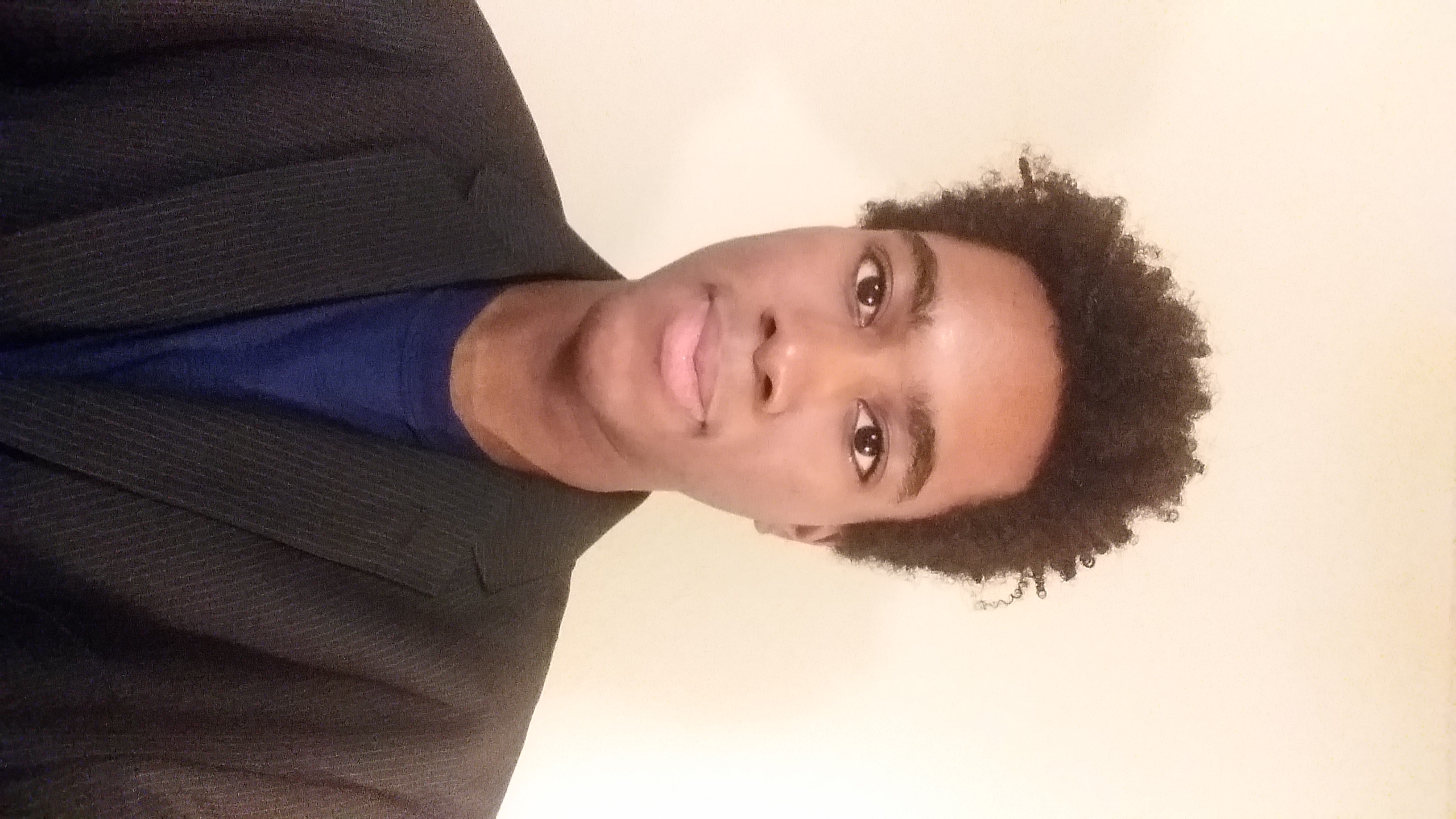
BIO
Hello. My name is Danté. I am an aspiring scientist focused on entering the chemical industry. Currently, I am in the process of
discovering the next step in my scientific career. I have experience performing research in an analytical chemistry lab where I fabricated electrochemical biosensors. I am interested in becoming a lab technician, obtaining a Master's degree and creating a path to lab management in the industrial sphere.
Controlling surface morphology of electrodeposited gold for the preparation of electrochemical aptasensors
Authors: Danté Comer, Amanda J. RitzStudent Major: Chemistry
Mentor: Amanda J. Ritz
Mentor's Department: Department of Chemistry and Biochemistry Mentor's College: Florida State University Co-Presenters: Olivia Stuehr
Abstract
Electrochemical, aptamer-based (EAB) sensors are an emerging class of biosensor with promising applications for point-of-care (POC) devices, and have been used to detect and quantify a wide range of biological and chemical analytes with high specificity. EAB sensors are typically fabricated on gold electrode surfaces, for which there are various methods of increasing the microscopic surface area. This is typically done to accommodate a greater number of aptamer probes on the surface to enhance the current response, which is particularly important for miniaturized sensors. Previous attempts to increase the surface area have not thoroughly assessed the effects of gold morphology on the performance of EAB sensors on both macroscale and miniaturized sensors. Small-scale sensors will enable spatiotemporally resolved measurements, however, there is a lack of aptamer-based probes fabricated on the micro and nanoscale, with few examples in literature. Here, we used electrodeposition to increase the microscopic surface area and to control surface morphology, to explore the resulting effects on EAB sensor performance on the macroscale and the microscale. Using aptamers specific to target analytes adenosine triphosphate (ATP) and dopamine (DA), square wave voltammetry and cyclic voltammetry were used to interrogate the EAB sensors. Since electrodeposition on the two sizescales resulted in different surface features, the comparison of macroscale and microscale sensors gave additional insights into how gold nanostructures affected the EAB sensor self-assembled monolayer and the overall sensor performance.
Keywords: Biosensing, Morphology, Aptasensor, Microelectrode, Nanostructure
22nd annual Undergraduate Research Symposium
Elena Villamagna Poster Session 1: 9:00-9:45/Poster #3

BIO
I am studying to become a midwife and anthropological researcher of indigenous birthing practices.
The Impact of Employment on Maternal and Infant Outcomes
Authors: Elena Villamagna, Jessica BahorskiStudent Major: Public Health
Mentor: Jessica Bahorski
Mentor's Department: Nursing Mentor's College: FSU College of Nursing Co-Presenters:
Abstract
Mothers in the United States face a hard decision after giving birth, whether to leave their baby before they are two months old or leave their job. The United States is one of the less infant-friendly nations, one of the biggest indicators being that it does not require paid maternity leave. The purpose of this study is to understand the impact that work has on a mother and infant during pregnancy and postpartum. The target population of this study is mothers who were employed before pregnancy, who are between the ages of 18-20, and who live in Florida. I will survey the mothers, asking questions on demographics, pregnancy, birth, and postpartum. I will then follow up with an interview to gain a deeper understanding of the impact their work had on their pregnancy and birth. I will analyze the data to find common challenges associated with work and pregnancy/postpartum. I hypothesize that work will present itself as one of the major factors in the mothers’ decisions throughout pregnancy and postpartum. The information provided by this study and similar studies can be used to push legislation on better maternity leave in the United States.
Keywords: Infant, Maternal, Employment
22nd annual Undergraduate Research Symposium
Sylvia Long Poster Session 2: 10:00 - 10:45/Poster #36
BIO
I am a first-year Honors student from Columbus, Ohio. I am passionate about the environment and I hope to one day make a positive impact on human life and the environment through technological innovations, research, or education. I hope to continue research throughout my undergraduate experience and into graduate school. I would like to begin researching biogeography or climatology.
Developing Video Content to Engage Students in STEM
Authors: Sylvia Long, Hannah HiesterStudent Major: Environment and Society
Mentor: Hannah Hiester
Mentor's Department: Department of Biological Science Mentor's College: Office of STEM Teaching Activities Co-Presenters: Justin Gonzalez, Nikki Kanakis, Renee Souvenir
Abstract
In the growing digital age, videos are a useful source of accessible learning material. However, it is important to design and use videos effectively to maximize benefit to the learner and to avoid misusing technology. The purpose of this study is to create guidelines for instructors to use in the creation of multimedia video lessons, specifically focusing on STEM subjects. These guidelines direct instructors to design videos that support effective learning through consideration of essential and generative processing, motivation, and elimination of extraneous elements. The guidelines were constructed through a comprehensive literature review of multimedia video learning and video design, examining the effects of video structure, modes of instruction, emotion and motivation, and other aspects of video learning. In addition, this study included designing and creating sample videos that adhere to the guidelines. Overall, the guidelines are a useful tool for STEM education, providing a baseline for the creation of impactful videos.
Keywords: Education, STEM, Video, Multimedia, science
22nd annual Undergraduate Research Symposium
Omer Turkomer Poster Session 1: 9:00-9:45/Poster #17
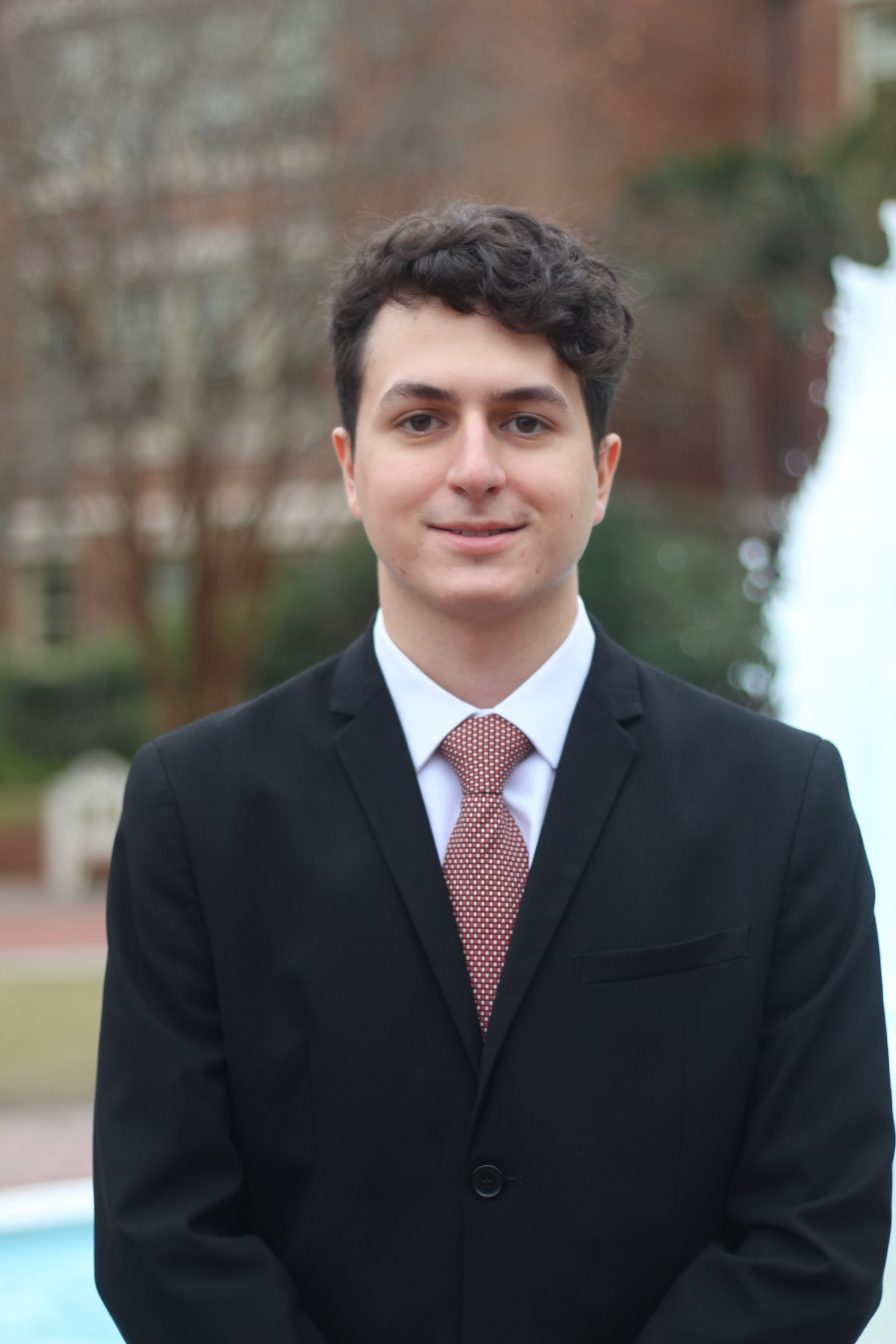
BIO
My name is Omer Turkomer, I am Turkish-American second-year student at FSU majoring in Political Science and International Affairs as well as completing a minor in Economics. Some of my research interests include the relationship between American electoral institutions and political outcomes, as well as the factors that contribute to policy diffusion across the states. My interests in politics developed during the 14 years of my life that I spent living in Istanbul, Turkey, since during this time I experienced the negative effects of living under an authoritarian regime which made me passionate about better understanding and applying political processes as well as the institutions that uphold them. Following the completion of my undergraduate degree, I plan on attending law school where I hope to study Constitutional law. In the future, I want to work in either government consulting or lobbying as I believe that route would allow me to aim to improve some of the shortcomings of the American political system, I have learned about during my time studying political science.
Morality versus Money: The Adoption of Recreational Marijuana Laws Across the United States
Authors: Omer Turkomer, Justin CrofootStudent Major: Political Science, International Affairs
Mentor: Justin Crofoot
Mentor's Department: Political Science Mentor's College: College of Social Sciences and Public Policy Co-Presenters:
Abstract
Most cannabis policy scholarship focuses on medical marijuana laws (MMLs) rather than recreational marijuana laws (RMLs). Debates around MMLs center around tradeoffs between (contested) healthcare benefits and the morality of drug legalization. On the other hand, debates about RML adoption instead focus on the tradeoffs between morality and the economic benefits to the state. In this paper, I investigate the influence of morality and fiscal needs on state-level adoption of RMLs. RMLs bring a growing industry, tax revenue, and interest group activity to a state, all of which encourage political actors to embrace RMLs. I find that both state morality (as measured from CCES survey responses) as well as state fiscal concerns (as measured by state budget deficits, GDP growth, and campaign contributions) increase the probability that a state adopts RMLs.
Keywords: Marijuana, States, Diffusion, Morality, Recreational
22nd annual Undergraduate Research Symposium
Jayson Bakshi Poster Session 4: 12:30 - 1:15/Poster #18
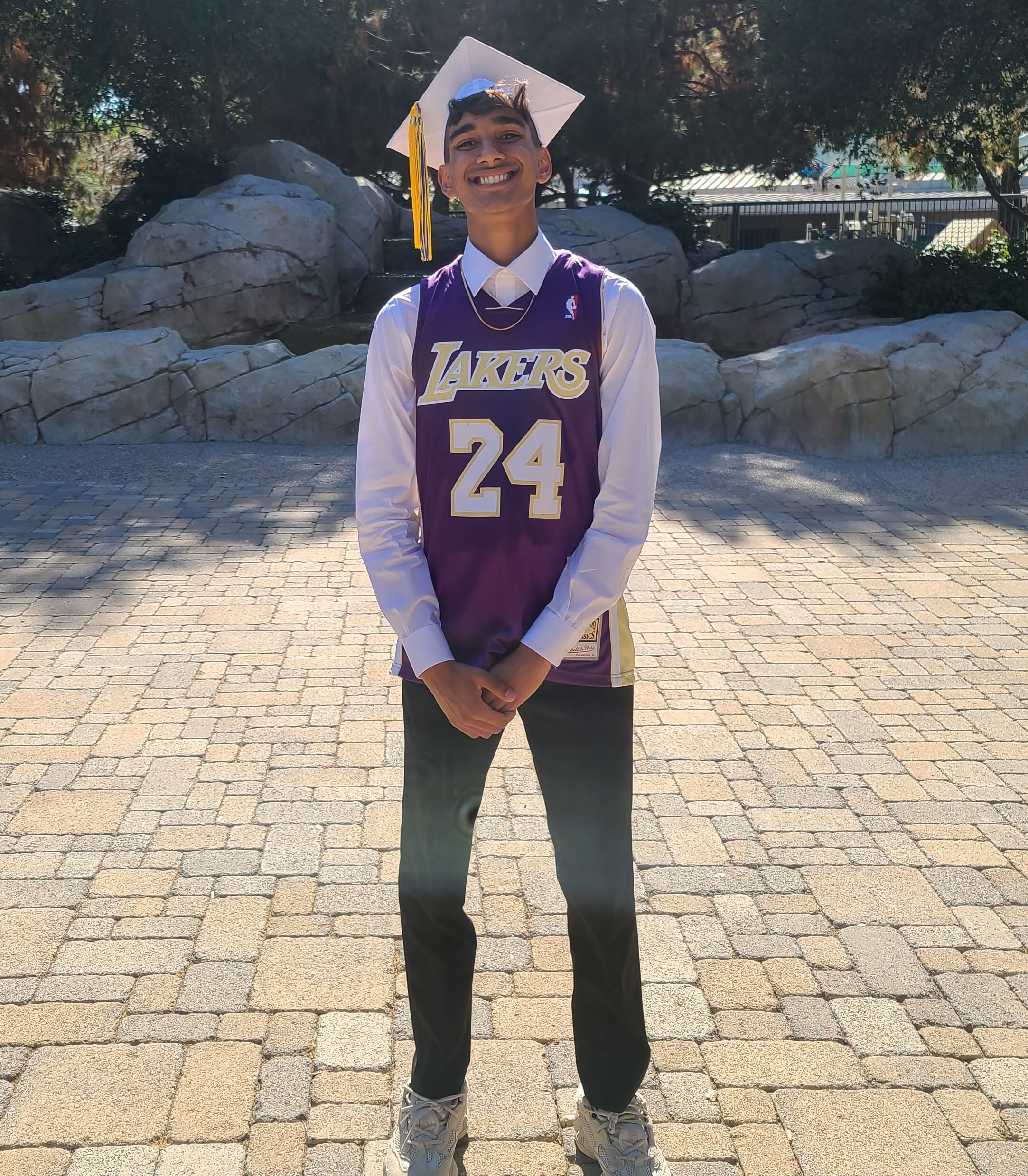
BIO
I am a first year Honors student studying Cell & Molecular Neuroscience on the pre-medicine track in pursuit of becoming a sports medicine physician. I was born in Rochester, NY, but completed high school in Orange County, CA. I hope to further efforts in providing equal access to healthcare for all people, especially those of disadvantaged socioeconomic backgrounds, and help increase the extent of equal opportunity within our societies. In my free time, I enjoy playing basketball and watching the Lakers.
Growth Mindsets and Emotions in Second Language Acquisition: A Literature Review
Authors: Jayson Bakshi, Esra OzdemirStudent Major: Cell & Molecular Neuroscience
Mentor: Esra Ozdemir
Mentor's Department: Foreign and Second Language Education Mentor's College: Education Co-Presenters: Richard Hilpert, Teonna McCullum
Abstract
When learning a new language, a multitude of factors can interplay within the acquisition of this new language. Such factors include socioeconomic background or environment, age, personal history, previously known languages, and one’s mindset (Riasati & Rahimi, 2018, pp. 1-2). Through second language acquisition (SLA), these factors can serve as possible hindrances or advantages for language learners. In the field of SLA, the mindsets of language learners can be modified or influenced in various ways to attempt to increase their overall performance in their SLA (Lou & Noel, 2019, pp.1-2). To influence these factors, interventions can potentially transform mindsets of second language learners. For example, various researchers have concluded that mindsets can predict L2 speaking and, interestingly, reading outcomes and performance (Khajavy & Pourtahmasb, 2021, p. 2). For the current study, researchers utilized forty-nine peer-reviewed articles; topics included foreign language speaking anxiety, self-esteem self-confidence, second language (L2) speaking confidence, and language mindsets. From the systematic review of literature regarding how various factors can affect language learning, it can be predicted that interventions that positively affect individuals' growth mindsets will have beneficial effects on their speaking performance overall through increased self-confidence, an increase in positive emotions, and a decrease in negative ones such as speaking anxiety. Our research aims to evaluate the different factors that can potentially be influenced by mindsets and improve the overall language performance as a potential consequence of holding a growth mindset.
Keywords: second language acquisition, anxiety, speaking
22nd annual Undergraduate Research Symposium
Gabriela Zernik Poster Session 1: 9:00 - 9:45/Poster #40

BIO
I am a freshman from Chicago IL majoring in Communication Science and Disorders. My future career plans are to become a Speech-Language Pathologist. I hope to get into graduate school after undergrad and receive my masters for Speech Pathology. I am interested in working with kids with disabilities.
Learning a Second Language Unconsciously
Authors: Gabriela Zernik, Dr. Shaofeng LiStudent Major: Communication Science and Disorders
Mentor: Dr. Shaofeng Li
Mentor's Department: Department of Modern Language Mentor's College: College of Arts and Sciences Co-Presenters: Corey Burns, Allie Cordero, Carson Long, Jeffery Sims, Luis Wong Chen
Abstract
The purpose of this study is to assess the bearing of 3 different implicit language aptitude scores [LLAMAD, Artificial Grammar (AG), and Passive Priming (p)] on L2 speech performance. It was hypothesized that all three of these implicit aptitude scores would have significant positive correlations with L2 speech performance. 250 speech samples were recorded by Chinese college student English-L2 learners and rated on comprehensibility and accentedness. The averaged ratings were then compared to the students’ corresponding LLAMAD-, AG- and p-scores resulting from separate tests. It was found that LLAMAD-scores had a significant positive correlation, AG-scores had no significant correlation, and p-scores had a significant negative correlation with L2 speech performance. These results have a bearing on L2 education at large; L2 education traditionally centers on conscious (explicit) language-learning and scholars have called into question the exclusion of unconscious (implicit) language-learning. This data suggests conflicting support for the inclusion of unconscious language-learning streams into L2 curriculum.
Keywords: Learning Second Language Unconsciously
22nd annual Undergraduate Research Symposium
Lauren Fernández Poster Session 2: 10:00 - 10:45/Poster #18
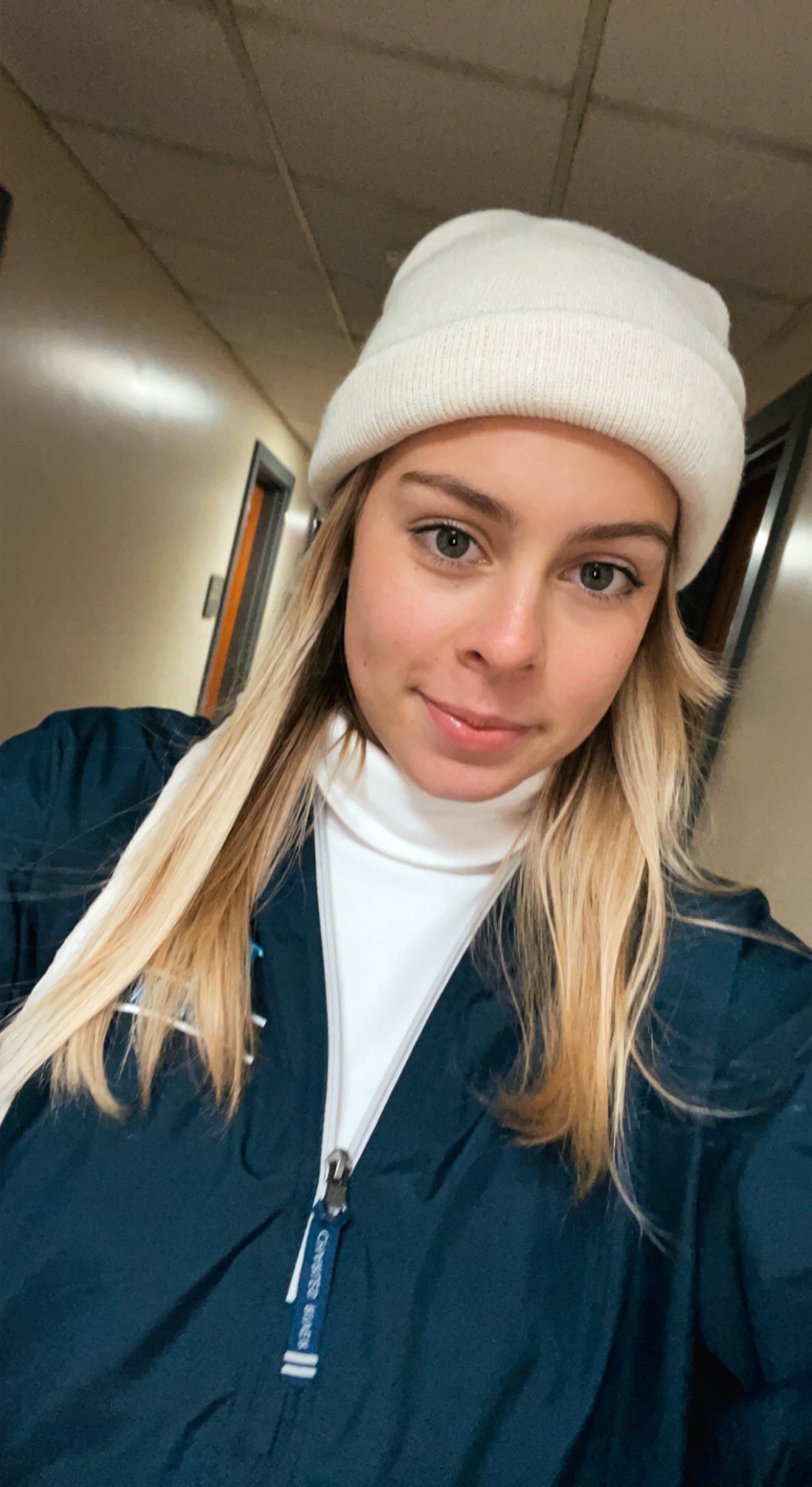
BIO
My name is Lauren Fernández and I am a first year student at Florida State studying political science. I'm from Miami, FL, but recently moved to the D.C. area. I am passionate about cooking, hiking, and music. After I graduate from FSU, I want to study law in either Virginia or D.C.. I'd love to work in either intellectual property, medical malpractice, or environmental protection law in the future.
Into The Media's Framing of Climate Change
Authors: Lauren Fernández, Kenneth MackieStudent Major: Political Science
Mentor: Kenneth Mackie
Mentor's Department: Department of Political Science Mentor's College: College of Social Science and Public Policy Co-Presenters: Ashleigh Kairalla
Abstract
This research attempts to convey an understanding of how the media has changed in its coverage of climate change in the past 15 years. Utilizing transcripts from cable news networks, this paper analyzes the tonality, coverage, and focus of different news networks concerning climate change over time. In particular, it analyzes the differences in language used by partisan news networks concerning this topic. This research finds that, over time, news networks have begun to be more accepting of the concept of climate change and, oftentimes, partisan news networks – both left and right-leaning – attempt to use this crystalized issue in order to appeal to their supporters – although their language is considerably different. This research project is currently still ongoing.
Keywords: Climate Change, Media
22nd annual Undergraduate Research Symposium
Jaidyn Smith Poster Session 2: 10:00 - 10:45/ Poster #20

BIO
Hi! I'm a Communication Sciences and Disorders major with an interest of pursuing Audiology. When not in class, you can find me at the ASLC or Strozier Library. A continued interest of mine is Feminism and how oppressed groups like Women are represented in Film.
Women Representation in Bollywood FIlm
Authors: Jaidyn Smith, Rebecca PetersStudent Major: Communication Sciences and Disorders
Mentor: Rebecca Peters
Mentor's Department: Department of Religion Mentor's College: College of Arts and Sciences Co-Presenters: Zoe Dupler, Silvia Garcia
Abstract
Bollywood, a commonly used name to encompass Hindi Cinema, grossed 183 billion rupees in the year 2020. With such a big and rapidly modernizing industry, the lack of women in production and acting roles is a problem found in industries worldwide
Largely, societal roles combined with patriarchal attitudes have left most women characters silently in the background or serving roles to further the male characters.
Recently there has been an ever-increasing presence of female directors. This project seeks to evaluate how those women directors present their women characters; it asks if they reinforce or subvert expectations.
The purpose of this study is to determine quantitatively how women characters are illustrated in those Bollywood films directed by a woman.
Keywords: Bollywood, Film, Women
22nd annual Undergraduate Research Symposium
Priscilla Reyes Poster Session 7: 3:30-4:15/Poster #29

BIO
My name is Priscilla Reyes and I am from San Jose, Costa Rica. I also was raised in Oregon, Texas, and Florida where I completed high school. I am currently a second-year student majoring in public health on a pre-medical track. My current involvements at FSU include being the founder and president of Make Medicine Human, the communications chair of the American Medical Women's Association, and a proud member of USSTRIDE and of MAPS. I am also a volunteer with Big Bend Hospice, The Kearney Center, and Tallahassee Memorial Hospital. I am incredibly grateful to have the opportunity to be involved with research and meet wonderful individuals that continue to shape my academic experience.
Providing Rural Honduras with Preventative Measures for Hypertension in Adults
Authors: Priscilla Reyes, Sunny NarayananStudent Major: Public Health with a Chemistry minor
Mentor: Sunny Narayanan
Mentor's Department: Research Faculty Mentor's College: College of Health and Human Sciences Co-Presenters:
Abstract
In the country of Honduras, 1.91% of the total deaths are a result of hypertension. Honduras is considered a LMIC, composed of eighteen “departamentos” or departments that have their own capital cities. This focus of hypertension is within the Yoro department of Gracias a Dios, with a population of approximately 94,000 residents with six municipalities. Gracias a Dios, Honduras is the department with the highest poverty rate (89.4% of the population) with only 27.7% of the households having access to clean water. In terms of healthcare access, the average distance to the nearest hospital is approximately 74.8 kilometers. Therefore, hypertension is often under-diagnosed due to not only this lack of healthcare access but also economic burden and low physician-to-patient ratio. In order to accurately assess the hypertension within this community in partnership with local health care workers, we developed a survey with the intent of distributing it to the population with questions pertaining to diet, lifestyle, and healthcare access.
Keywords: Public Health, Medicine, Rural
22nd annual Undergraduate Research Symposium
Brennan Hinson Poster Session 6: 2:30-3:15/Poster #9
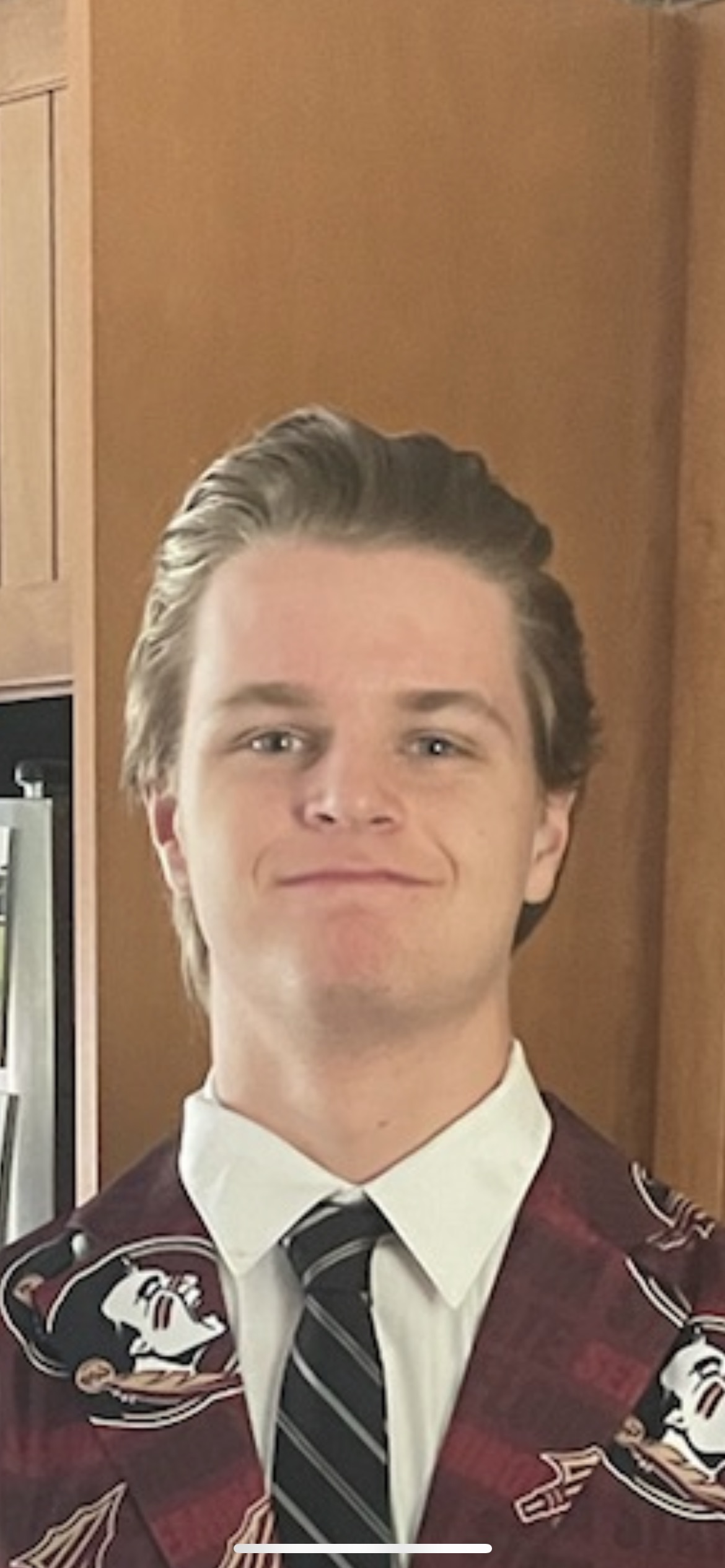
BIO
I am a first-year civil engineering major here at FSU, and am originally from Tampa. I am involved in the Presidential Scholars Program, in addition to Pi Lambda Phi fraternity. I enjoyed my engineering-related research here and hope to land a successful job as a civil engineer after my four years at Florida State.
Site-Suitability Analysis for Placement of Green Infrastructure Projects along the Florida Gulf of Mexico Coast
Authors: Brennan Hinson, Kassie ErnstStudent Major: Civil Engineering
Mentor: Kassie Ernst
Mentor's Department: Civil and Environmental Engineering Mentor's College: FAMU-FSU College of Engineering Co-Presenters:
Abstract
The Gulf Region faces many natural phenomena, such as hurricanes and heavy rainfall which contribute to excessive flooding. The implementation of green infrastructure and various engineering designs can mitigate flood damage and assist the environment while aiding social benefit to the surrounding community.
This project initially focused on various methods involved in green infrastructure and their effects on flood mitigation, then specific systems that help to counter excess water flow. From there, we broke down indicators for site suitability and modified an already-developed indicator framework to better fit the needs of the project. We then matched these methods to sites in Florida to help improve the indicator list while also measuring a location’s viability for a possible green infrastructure project.
This framework could be extremely beneficial to those concerned with developing a project in the realm of green infrastructure, and also gives insight into the most important things to consider when trying to maximizing social and environmental benefit. Future additions to this project would consist of developing a framework in ArcGIS, allowing users to apply the set of indicators to a large region at one time, identifying the best possible locations automatically without having to grade each one, thus greatly increasing the efficiency of this project’s potential applications.
Keywords: flood, engineering, indicator, site suitability
22nd annual Undergraduate Research Symposium
Vivian Bernard Poster Session 6: 2:30 - 3:15/Poster #62

BIO
My name is Vivian Bernard. I was born in the Dominican Republic, but lived in Cape Coral, Florida, most of my life. I am a biomedical engineer and I am especially interest in biomechanics and biomaterials. In the future, I hope to get my PhD, do some research more research in biomechanics and become a professor to teach the next generation of engineers.
Finding Orange: Natural Frequency of Rocking Chairs
Authors: Vivian Bernard, Stephen Hugo ArceStudent Major: Biomedical Engineering
Mentor: Stephen Hugo Arce
Mentor's Department: Chemical and Biomedical Engineering Mentor's College: FAMU-FSU College of Engineering College in Tallahassee, Florida Co-Presenters: Taiwo Sogbesan
Abstract
Our project focuses on modeling the motion of a rocking chair. We recorded videos of the free oscillation of the chair under different conditions. The data obtained from our trials were then processed using MatLab. From the figures generated, we were able to begin to identify the constants within the pre-established ODE, which modeled the motion of the chair. Our goal with this research is to gain a thorough understanding of the chair in order to be then able to create a device that prolongs the oscillation of the chair. Our main motivation for this project is to provide a restful night of sleep to a child who has autism. He is unable to sleep if he is not being rocked, and therefore we hope our research is able to develop a device to aid him.
Keywords: Oscillation, Natural Frequency, Rocking Chair
22nd annual Undergraduate Research Symposium
Bria Weisblat Poster Session 4: 12:30 - 1:15/Poster #60
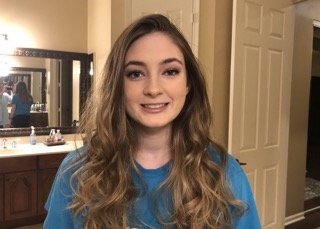
BIO
I am a first-year computer science major at Florida State University from Broward County Florida hoping to double minor in information technology and innovation. I'm currently working to find a career within user interface development and I enjoy the creative opportunities that coding brings. I'm interested in future research opportunities that involve learning new and versatile coding languages to increase my technological skillset for my career path.
Comic and Graphic Narrative Accessibility
Authors: Bria Weisblat, Aaron RodriguezStudent Major: Computer Science
Mentor: Aaron Rodriguez
Mentor's Department: Department of English Mentor's College: College of Arts and Sciences Co-Presenters: Summer Carrier
Abstract
Multimodal media is largely inaccessible to blind and low vision readers due to ineffective and/or inattentive human and AI interventions. Our project attempts render accessible one type of multi-modal media: comics and graphic novels. Based on previous research, we have determined a spectrum of issues blind and low vision readers encounter while reading comics and graphic narratives. This feedback was incorporated into the backend code, based on the comic book markup language (CBML) and user interface (UI) of the multimodal accessibility app Vizling. The app translates a work in three different ways to provide options for users, as well as being able to represent the source material in a more holistic way than apps have done in the past.
Keywords: Comic/Narrative/Graphic/Accessibility
22nd annual Undergraduate Research Symposium
Sebastian Castro Poster Session 3: 11:00- 11:45/Poster #30
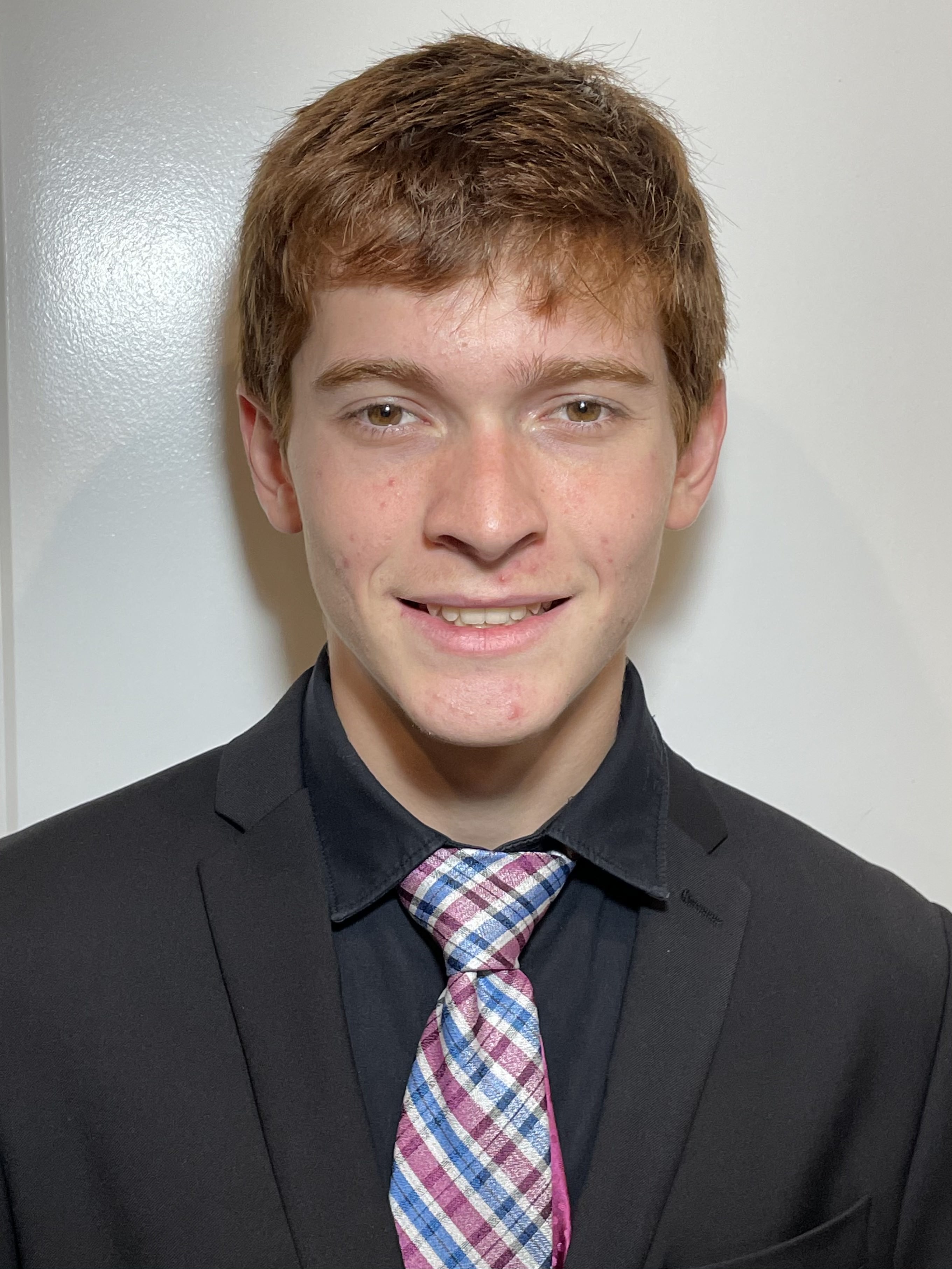
BIO
I am a first year chemical engineering student at FSU. I am from Tampa, FL. I am interested in doing research related to chemistry and chemical engineering, specifically areas in energy and materials. I am considering attending graduate school to pursue a doctorate degree, and my current career goal is to work with or lead a team in energy development.
Controlling Fe:Ni Ratios in Carbides to Affect Electrocatalytic Activity
Authors: Sebastian Castro, Isabella BertiniStudent Major: Chemical Engineering
Mentor: Isabella Bertini
Mentor's Department: Department of Chemistry and Biochemistry Mentor's College: College of Arts and Sciences Co-Presenters: Dylan Barton
Abstract
For the past several decades scientists around the globe have been searching for fossil fuel alternatives, hydrogen fuel being the most promising candidate. Water electrolysis is the main vector by which renewable hydrogen fuel is produced. Herein we present a study on earth abundant electrocatalysts for the Oxygen Evolution Reaction (OER), the rate limiting step for water splitting, as alternatives to the current noble metal-based catalysts. In this project we attempt to control the Fe:Ni ratio for the synthesis of both Prussian Blue Analogues (PBAs) and nanocarbides, using a novel top-down synthetic technique in order to find an optimum ratio that maximizes electrocatalytic activity and long-term stability (Hardy, 2019). Current literature suggests a ratio of 20-40% Fe as ideal, but not much research has been done involving FeNi carbides, and even less when it comes to controlling the bimetallic ratio (Sun, 2021). In addition to synthesis, characterization and analysis of these materials is presented. The methods used to characterize the materials are pXRD (powder X-ray diffraction), XRF (X-ray fluorescence), and SEM/TEM (scanning electron microscope/transmission electron microscopy) imaging, and the performance and stability of the as synthesized materials are analyzed using CV (cyclic voltammetry). The current results are a promising indication that new, high OER-performing materials were made, and an optimum ratio for Fe was found that outperforms the IrO2/RuO2 state-of-the-art.
Keywords: Carbides, Energy, Catalyst, Iron, Nickel

